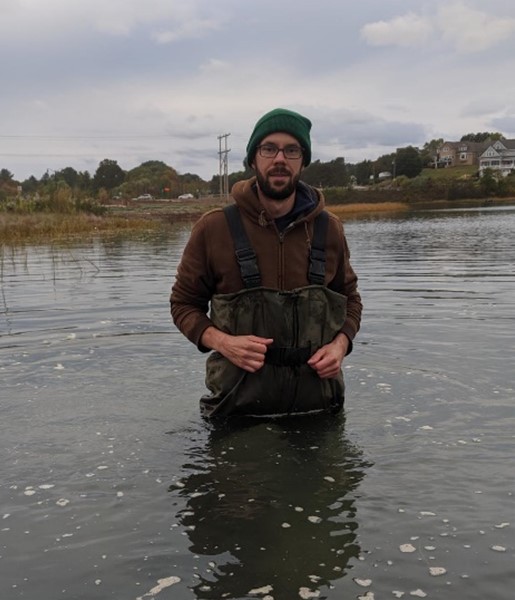
Ph.D. Candidate, Drexel University
Seneca Award
The influence of hydrology, edaphic conditions, and light availability on salt marsh migration into forests in the northeast United States
“Accelerated sea level rise is causing rapid coastal habitat change, leading to plant community composition shifts, and the development of novel plant communities. Salt marshes are known for providing a suite of valued ecosystem services, including flood protection, nutrient cycling, carbon storage, and habitat provision. Increased flooding due to sea level rise can drown marsh plants, resulting in conversion to open water or mudflat and a loss of ecosystem services. Salt marshes can build vertically by accumulating sediment and organic matter, potentially compensating for sea level rise. However, an estimated 58% of marshes in the US face an accretion deficit, where vertical growth of the marsh is outpaced by sea level rise. For these marshes to persist, they must transgress laterally over upland soils, a process termed marsh migration. Marshes can migrate in areas with low upland slopes and no human obstructions, but it is unclear how different factors influence the rate of marsh migration or whether conditions in formerly upland areas encourage dominance of less-desirable plants (e.g., the invasive Phragmites australis) while excluding others that provide more valuable ecosystem services.
To better understand and predict coastal habitat change, this study will examine habitat characteristics across a gradient of salt marsh to forest to determine factors on marsh migration. The main goals are to: 1) compare variability in light availability, soil chemistry, and groundwater dynamics among plant functional groups, and 2) relate spatio-temporal variability in soil salinity and groundwater levels to factors such as tides, precipitation, and evapotranspiration. I will address these goals using field sampling of soil and vegetation, data loggers installed in groundwater wells, and geophysical methods of salinity measurement such as electrical resistivity imaging and electromagnetic induction. This project focuses on defining environmental attributes and plant community composition along the marsh upland border, and thus incorporates aspects of gradient analysis to identify key thresholds, as well as the utilization of a space for time substitution to understand how plant communities will evolve in the future under climate change.
